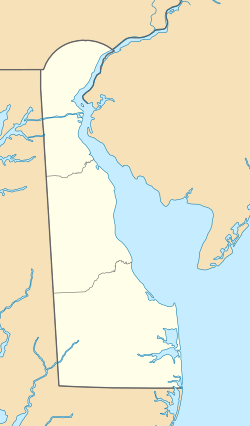Portsville, Delaware facts for kids
Quick facts for kids
Portsville, Delaware
|
|
|---|---|
| Country | United States |
| State | Delaware |
| County | Sussex |
| Elevation | 13 ft (4 m) |
| Time zone | UTC-5 (Eastern (EST)) |
| • Summer (DST) | UTC-4 (EDT) |
| Area code(s) | 302 |
| GNIS feature ID | 216186 |
Portsville is a small, quiet place in Sussex County, Delaware, United States. It's known as an "unincorporated community." This means it's a group of homes and businesses that don't have their own local government like a city or town. Instead, it's managed by the county government.
Portsville is located right next to Broad Creek, a waterway that flows into the Nanticoke River. It's about 0.8 miles (1.3 km) southwest of another small community called Bethel.
What is an Unincorporated Community?
An unincorporated community is a place where people live close together, but it's not officially a city or town. It doesn't have its own mayor or city council. Instead, the larger county government takes care of things like roads, police, and other services.
This is different from a city, which has its own local rules and leaders. Unincorporated communities often grow from small settlements. They might not have enough people to form their own government.
The Portsville Lighthouse
One of the most famous landmarks in Portsville is the Portsville Lighthouse. This historic lighthouse is very important. It is listed on the National Register of Historic Places. This means it's recognized as a special place that needs to be protected because of its history.
Lighthouses like this one used to guide boats and ships. They helped sailors find their way safely along the waterways. The Portsville Lighthouse stands as a reminder of the area's past connection to water travel and trade.
Nature Around Portsville
Portsville is surrounded by natural beauty. Just a short distance away, you can find a lovely pond called Tussock Pond. This pond covers about 8.6 acres of land.
Ponds and creeks like Tussock Pond and Broad Creek are important for local wildlife. They provide homes for different kinds of plants and animals. Exploring these natural areas can be a fun way to learn about the environment.



